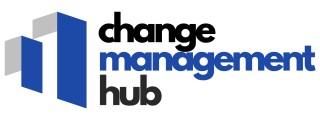
Understanding the human side of change management
The emotional impact of organizational change
Change management is not just about new processes or technologies. At its core, it is about people. Employees often experience a range of emotions when faced with change, from uncertainty and anxiety to hope and excitement. Recognizing these human reactions is essential for business owners and managers who want to lead effective transitions. Addressing the emotional side of change helps bridge the gap between strategic goals and real-world outcomes, supporting both business growth and employee engagement.
Recognizing the role of communication and trust
Clear, honest communication is a cornerstone of successful change management. Employees need to understand not only what is changing, but also why the change is necessary and how it will impact their roles. Transparent communication builds trust, which is vital for fostering a culture of empowerment and professional growth. Human resources and management teams should prioritize open dialogue, creating opportunities for feedback and discussion. This approach supports continuous learning and helps identify skills gaps that may arise during transitions.
Supporting professional development and skill building
As businesses evolve, so do the skills required for success. Investing in development programs and mentorship opportunities helps employees adapt to new challenges. Professional development initiatives, such as training sessions or digital tools, can empower individuals to grow their careers and contribute to business objectives. By focusing on skill development, organizations can close the gap between current capabilities and future needs, ensuring long-term business growth and effective project management.
- Encourage continuous learning to support career development
- Offer access to top software and paper free solutions for efficiency
- Promote mentorship to unlock employee potential
Understanding the human side of change management is the foundation for building a resilient corporate culture. For a deeper look at how organizational structures influence change, explore this resource on the chain of command in change management.
Building a culture of empowerment
The role of leadership in shaping corporate culture
Empowerment within organizations starts with leadership. When leaders actively support professional growth and skill development, they set the tone for a culture where employees feel valued and engaged. This approach not only bridges the skills gap but also drives business growth and effective change management. Human resources teams play a crucial role in aligning development programs with business objectives, ensuring that both employees and the organization benefit from continuous learning and career development opportunities.
Strategies for fostering empowerment and engagement
Building a culture of empowerment requires more than just words. It involves practical strategies that encourage employees to take ownership of their roles and contribute to business development. Some effective approaches include:
- Implementing mentorship programs to support career growth and professional development
- Offering access to digital tools and top software for project management and paper free workflows
- Encouraging continuous learning through skill development workshops and training sessions
- Recognizing achievements to boost employee engagement and motivation
These strategies help close the skills gap and empower employees to reach their full potential, which is essential for navigating change management challenges.
Bridging the gap between management and employees
Effective communication is at the heart of a strong corporate culture. When management listens to employee feedback and involves them in decision-making, it fosters trust and engagement. This collaborative environment supports both individual career growth and overall business development. For more insights on how organizational structure influences change, explore the chain of command in change management and its impact on empowerment.
Continuous improvement for long-term success
Empowering employees is not a one-time effort. Businesses must commit to ongoing professional development and adapt their strategies to meet evolving challenges. By investing in development programs and fostering a culture of continuous improvement, organizations can ensure sustained business growth and effective change management over time.
Practical tools for navigating change
Leveraging digital tools and strategies for smoother transitions
When navigating change management challenges, practical tools and strategies are essential for both individuals and businesses. The right approach can bridge the skills gap, support professional growth, and foster a culture of continuous learning. As organizations strive for business growth and employee engagement, the integration of digital tools, effective project management, and development programs becomes crucial.
- Digital tools: Modern businesses are increasingly adopting top software solutions to streamline change processes. These tools enable paper free workflows, enhance communication, and provide real-time insights into project progress. For example, digital project management platforms help teams collaborate efficiently, track milestones, and adjust strategies as needed.
- Development programs: Investing in professional development and skill development programs empowers employees to adapt to new roles and responsibilities. These initiatives address the skills gap and support career growth, benefiting both the individual and the organization.
- Mentorship and continuous learning: Establishing mentorship opportunities and promoting continuous learning are effective ways to nurture talent and encourage professional development. This approach not only boosts employee engagement but also strengthens the corporate culture.
- Change management frameworks: Structured frameworks guide businesses through the complexities of change, ensuring that strategies are aligned with organizational goals. These frameworks often include regular check-ins, feedback loops, and clear communication channels to keep everyone informed and engaged.
For business owners and human resources professionals, selecting the right mix of tools and strategies is key to unlocking employee potential and achieving sustainable business development. Empowerment, skill development, and a supportive culture all play a role in overcoming challenges and driving effective change management.
If you are seeking more actionable insights and practical guidance, you can download a white paper on effective change management strategies to further support your journey.
Overcoming resistance and fostering engagement
Addressing Resistance with Empathy and Strategy
Change management often brings uncertainty, and it’s natural for employees to feel hesitant or even resistant. Recognizing the human side of these reactions is essential for business leaders and managers. Resistance can stem from a skills gap, fear of the unknown, or concerns about how changes will impact daily work and career development. Effective management means listening to concerns, providing clear communication, and involving employees in the process. When businesses foster a culture of empowerment and continuous learning, employees are more likely to engage and contribute to solutions.- Open communication: Regular updates and transparent discussions help reduce anxiety and build trust within the corporate culture.
- Mentorship and support: Pairing employees with mentors or offering development programs can bridge the gap between current skills and new requirements, supporting professional growth.
- Digital tools: Leveraging top software for project management or paper free workflows can make transitions smoother and help employees adapt more easily.
Fostering Engagement for Lasting Change
Employee engagement is a cornerstone of successful change management. When individuals feel valued and see opportunities for career growth, their motivation to participate increases. Business owners and human resources teams can play a key role by creating strategies that highlight the benefits of change and recognize employee contributions. Some practical approaches include:- Recognition programs: Celebrate small wins and milestones to reinforce positive behaviors and maintain momentum.
- Continuous learning: Encourage skill development through workshops, online courses, or professional development initiatives. This not only addresses the skills gap but also supports long-term business growth.
- Feedback loops: Create channels for employees to share their experiences and suggestions, ensuring their voices are heard and valued.
Measuring progress and celebrating wins
Tracking Progress with Meaningful Metrics
Measuring progress in change management is more than just checking off completed tasks. It’s about understanding how well your business and employees are adapting, growing, and closing the skills gap. Effective management teams use a mix of quantitative and qualitative metrics to assess both the pace and quality of change. This can include employee engagement surveys, feedback sessions, and tracking participation in professional development programs. These insights help identify areas where additional support or skill development is needed, ensuring that no one is left behind during the transition.
Celebrating Wins to Boost Morale and Engagement
Recognizing achievements, both big and small, is essential for maintaining momentum. When businesses celebrate milestones—like successful project management rollouts, increased adoption of digital tools, or improvements in corporate culture—it reinforces a sense of empowerment and belonging. Public acknowledgment of employee contributions, whether through internal communications or team meetings, helps foster a culture of continuous learning and professional growth. This recognition also motivates others to engage more actively in development programs and change initiatives.
- Highlight professional growth: Share stories of employees who have advanced their careers or developed new skills during the change process.
- Promote mentorship: Encourage experienced team members to support others, bridging the skills gap and strengthening the business culture.
- Use digital tools: Implement paper free solutions to track progress and share updates, making it easier for everyone to stay informed and involved.
Leveraging Data for Continuous Improvement
Regularly reviewing progress data allows management to refine strategies and address challenges as they arise. This approach supports ongoing business growth and ensures that development programs remain relevant to employee needs. By fostering a transparent environment where feedback is valued, businesses can adapt quickly and sustain long-term success. For business owners and human resources professionals, this means not only achieving project goals but also unlocking the full potential of their teams.
For those looking to deepen their understanding of effective change management strategies, consider exploring resources like a download white paper on top software and best practices for professional development and business growth.
Sustaining change for long-term success
Embedding Change into Everyday Business Practices
Sustaining change for long-term success means more than just reaching initial goals. It’s about weaving new behaviors, processes, and mindsets into the fabric of your business. This ongoing journey requires commitment from leadership, managers, and employees alike. When change becomes part of daily routines, it supports business growth and professional development for everyone involved.
Continuous Learning and Skill Development
One of the most effective strategies for maintaining momentum is fostering a culture of continuous learning. Development programs, mentorship, and regular training help close the skills gap and keep employees engaged. Businesses that prioritize professional growth see higher employee engagement and better project management outcomes. Digital tools and top software can support these efforts, making it easier to track progress and identify areas for improvement.
- Encourage ongoing feedback and open communication to identify new challenges and opportunities.
- Offer career development resources and skill development workshops to empower employees.
- Leverage paper free solutions and digital tools for efficient management and documentation.
Celebrating Wins and Recognizing Progress
Recognizing achievements, both big and small, plays a crucial role in sustaining change. Celebrating wins boosts morale and reinforces the value of new practices. Employee recognition programs and regular check-ins help maintain high levels of engagement and motivation. This approach also supports a positive corporate culture where professional and career growth are valued.
Role of Leadership and Human Resources
Leadership and human resources play a central role in sustaining change. By modeling desired behaviors, providing mentorship, and supporting employee empowerment, they help bridge the gap between strategy and execution. Effective management ensures that change initiatives align with business objectives and employee potential.
Measuring and Adjusting for Ongoing Success
To ensure long-term success, businesses must regularly measure progress and adapt strategies as needed. Tracking key performance indicators, gathering employee feedback, and reviewing development programs help identify what’s working and where adjustments are needed. Download white papers and case studies can offer additional insights into effective change management strategies.
By embedding change into your business culture and supporting continuous professional development, you create an environment where growth, engagement, and innovation thrive. This not only benefits employees but also drives business owners toward sustainable success.













